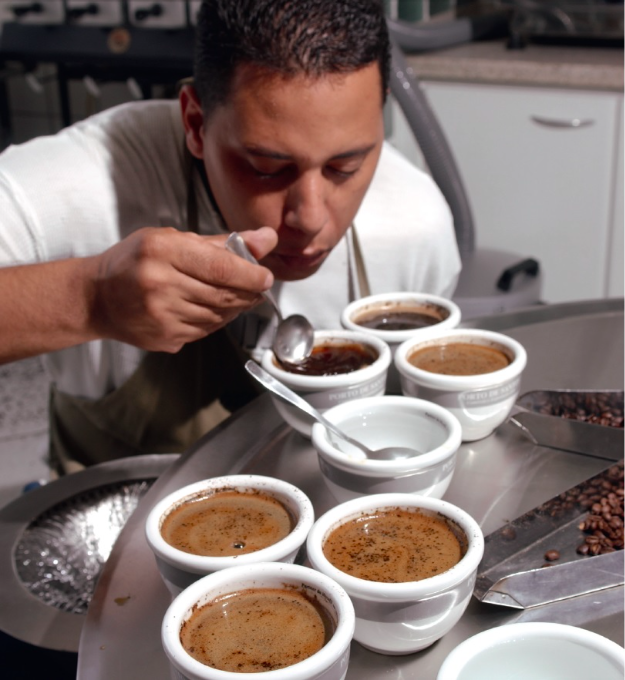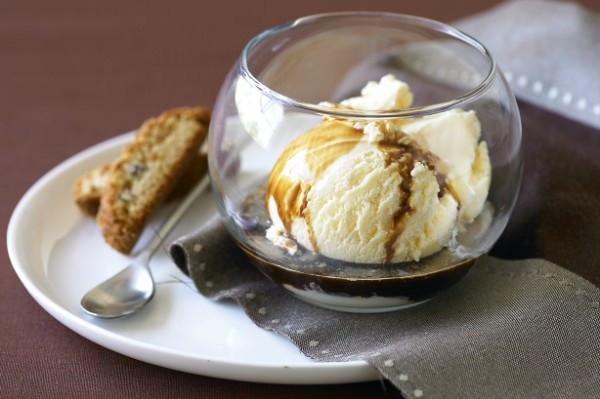The knowledge of tasting coffee | how to taste a cup of coffee carefully?
For professional baristas, please follow the coffee workshop (Wechat official account cafe_style)
Why is coffee tasting a discipline? Every human activity can lead to major mistakes, ordinary results, or remarkable achievements. Whether you can turn a mistake into a potential victory usually depends on whether you have the will to try and try again and again, gradually accumulate professionalism in repeated attempts and failures, and finally reach the level of perfection. Professional coffee cup testers devote themselves to this basic activity every day, honing their senses and trying to figure out any new feelings.

Becoming a professional coffee cup tester is not as easy as most people think. Everyone needs to have certain skills and then gradually improve them through the things they do most often. So if someone says you can be a perfect cup tester as long as you take a crash course, please beware of these people.
If you want to understand how to distinguish the nuances of coffee, you must accumulate over a long period of time and work hard every day, because you must use both senses and intelligence in the process of tasting coffee. The level that coffee cup testers can achieve is in direct proportion to personal curiosity and willingness to try, and beginners must keep practicing in order to become more professional. But the focus is not all on practice, because the difference between amateur and professional coffee cup testers also lies in their personal qualifications, which is entirely related to each person's natural ability.
But give it a try! The harder you try, the higher your sense of achievement will be when you find that your ability to taste coffee has improved. Here will provide some simple suggestions and information for everyone to use in daily life, but also to provide specific assistance for coffee tasting.
Flavor and aroma
The taste of coffee can be divided into sour, bitter and sweet. Untrained people often misjudge a particular taste, and the most common mistake occurs when distinguishing sour from bitter. First of all, we must dispel the myth that the tongue is divided into different taste regions. In fact, the whole tongue can taste all kinds of taste; in addition to the tip of the tongue, the tongue and the side of the tongue can also taste sweet, and so on. The real difference lies in the intensity of taste in different regions: in the case of sugar water, a very low concentration of sweetness can be detected on the tip of the tongue, but only a high concentration of sweetness can be tasted on both sides of the tongue. Generally speaking, there is a strong feeling on both sides of the tongue when drinking lemon juice, which is sour taste. The root of the tongue is the area where you can feel the bitterness most. Things that can cause a strong reaction in this area may include herbal wine, dandelion leaves, or certain drugs. By carefully paying attention to the various stimuli you feel, you can identify and evaluate the intensity of the various ingredients of coffee in your mouth.
Savoring aroma is a more subtle task. There are two ways to distinguish the aroma of coffee: first smell the coffee (direct smell or pre-nasal smell), and then pay attention to the aftertaste (indirect or post-nasal smell) that occurs only after the first sip. It has been proved that we can detect different aromas through the prenasal and retronasal pathways and distinguish the same odors in different ways. If the difference between taste and aroma is not clear enough, try the following small experiment: hold your nose tightly, take a sip of coffee and pay attention to the feeling in your mouth. This is the taste of coffee. Don't swallow the coffee now, open your nose and pay attention to the new messages you receive in your head. Then you can recognize the aroma of coffee. This method can also be used to taste other foods, such as juice or dessert. For example, holding your nose makes it difficult to tell the difference between peaches and apricots or other tropical fruits.

Use the five senses
Five sensory functions must be used when tasting coffee. As long as you can realize the importance of these senses, no matter what brewing method is used, you can make a good cup of coffee and identify the complex characteristics of the coffee. Tasting coffee does require multiple senses, because enjoying a cup of coffee is not just about taste, but all senses are stimulated when preparing, smelling and tasting coffee. We all know that the mocha pot purrs, indicating that the coffee is ready. At the same time, our vision will also tell us whether the brown foam Crema "Klima" on espresso is up to standard. Smell is obviously the main sense of taste of dry and wet coffee, while taste tells us the sweetness, sour or bitterness of things. Finally, touch allows us to assess the taste and temperature of the food, as well as the density or "consistency" of the drink. Then explore how to make good use of your senses to understand all the messages of a cup of coffee and the factors that determine whether the cup of coffee is pleasing or not.
The basic difference between a person who drinks coffee at the bar in the morning and a real connoisseur or professional cup tester lies in whether he can judge what is only subjective "like" or "dislike". What is the correct evaluation based on the objective criteria recognized and shared by others. In order to enjoy all the subtleties of the taste and aroma of coffee, we must keep the taste buds at their best. This means that before tasting coffee, the oral environment should be kept neutral, do not let high temperature, spicy or heavy food, wine, tobacco and other things pollute the mouth. Rinse your mouth with water before tasting the next cup of coffee, usually before tasting each cup of coffee. Neutral rice incense can also be used to "clear" taste buds. Just put a few grains of rice into your mouth and chew and let the grains pass through the tongue. This method can remove the taste from the tongue and get ready for the next cup of coffee.
Article Source: "awakening the fragrance of the World: a Taste Journey into the Geography, History and Culture of Coffee"
Important Notice :
前街咖啡 FrontStreet Coffee has moved to new addredd:
FrontStreet Coffee Address: 315,Donghua East Road,GuangZhou
Tel:020 38364473
- Prev

Teach you how to easily make a special iced coffee "ice coffee" at home.
Communication of professional baristas Please pay attention to the coffee workshop (official Wechat account cafe_style). Do you also want a cup of iced coffee full of spirit when you go to work in the morning? there doesn't seem to be much choice except the freshwater iced coffee in the breakfast shop. in fact, you can make it before you go to bed the night before, or you can easily have a good iced coffee. What we want to introduce today is cinnamon milk iced coffee (such as
- Next

[dessert teaching] homemade Affogato espresso with ice cream is simple and practical
Professional barista Communication Please follow the Coffee Workshop (Wechat official account cafe_style) when you meet foreigners, I think I will encounter some embarrassing incidents when I go out for dinner and tea (for example, English is not good enough). When I was making coffee, suddenly a new friend asked me, "can you make me an Affogato?" "Affoga
Related
- What is the meaning of lactic acid fermentation with coffee bean treatment?
- How to judge the state of foam by sound?
- How does the latte pull out the unicorn pattern? Come to get for a little trick to improve the flower pull!
- Will flower pulling affect the taste of the latte?
- Do you know the history of coffee?
- The difference between honey treatment and sun washing what is raisin honey treatment?
- What kind of milk can a novice use to make coffee foam to keep the foam longer? The correct method and skills of milking tutorial sharing
- Why do washed coffee beans taste sour? Flavor characteristics of washed Coffee
- Introduction to the skill of how to practice the size and height of water injection around the circle of hand-brewed coffee
- How do beginners practice coffee flower drawing from scratch?

